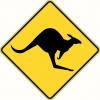I can cause my planes to create a type of chatter on a heavy cut. I sometimes call it a 'zipper cut' because it sounds like a zipper being opened or closed.
While looking over this thread a thought popped into my brain. This may have been done using a type 6 plane. Before type 9, the front of the frog was unsupported. This may have added to the cause of chatter.
Something else that popped into my head when seeing the title of this thread was one of the blades that came in a recent care package from my brother. It was an old Buck Brothers 2" tapered iron. It is likely O1 steel. (correction: the blade was checked today and it measures 1-11/16")
Pictures later.
jtk
Last edited by Jim Koepke; 03-10-2024 at 7:02 PM.
Reason: correction:
"A pessimist sees the difficulty in every opportunity; an optimist sees the opportunity in every difficulty."
- Sir Winston Churchill (1874-1965)






 Reply With Quote
Reply With Quote

